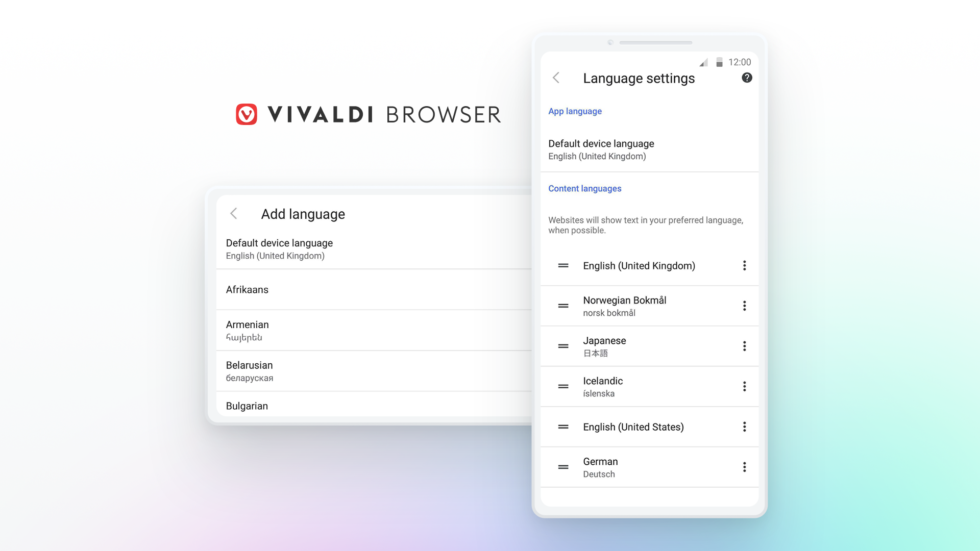
OSLO, Norway – April 29th, 2021: Vivaldi on Android should work for everyone. That’s why the latest version of Vivaldi on Android delivers better language support. Its multilingual approach now lets users change the language settings of the user interface of the browser irrespective of the default language of their device.
The new update gives the ability to block cookie dialogs and banners with Vivaldi’s new built-in Cookie Crumbler. Vivaldi listens to its users and adds a new option to access the Start Page from the Address Bar, a quick way for users to get to their Speed Dials faster.
Vivaldi also launched its new version on desktop with Cookie Crumbler, refreshed Panels, and new easier ways to add Bookmarks.
The latest version Vivaldi 3.8 for free on mobiles and tablets running Android 5 or higher, and on up-to-date Chromebooks.
“Language barriers are one of the biggest obstacles to internet adoption. Breaking them means giving more accessibility to users. Our ongoing efforts to add improved language support will help users greatly to browse faster in their native languages,” Vivaldi CEO Jon von Tetzchner says.
Feel at home with the Language Switcher.
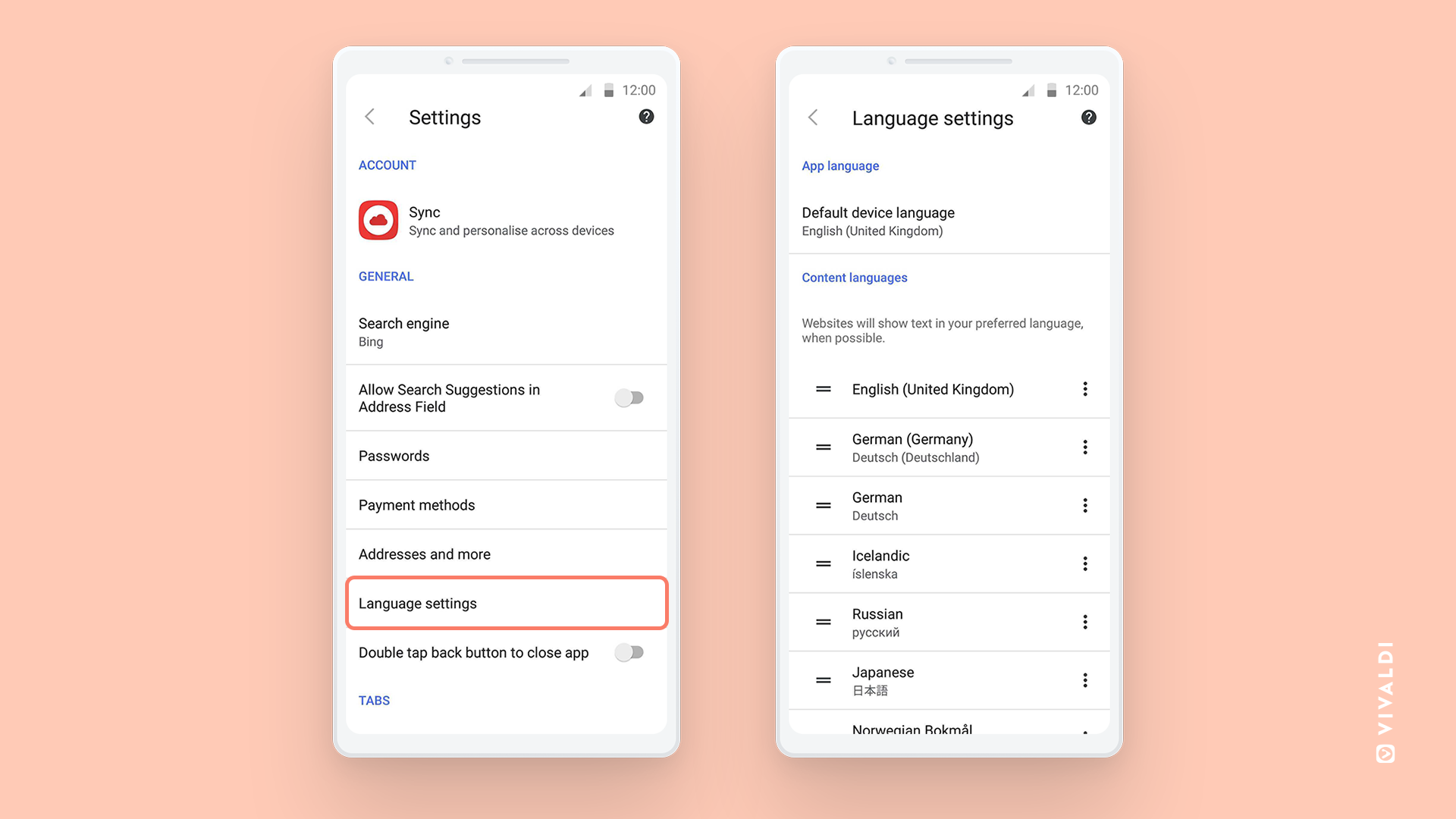
Earlier, the UI (user interface) of the browser would use the language of the Android OS but now users can select their preferred language from the list of 41 languages that Vivaldi offers.
Much-requested by Vivaldi users, this new feature adapts to different workflows of its multilingual users, as all Vivaldi features in the browser do and should.
For example, a device has English as its default but now with this option, a user can change the language of the UI of the browser and explain to his grandmother a certain thing in Japanese, the only language that she comprehends.
This new language setting makes sure that the browser is easy to use and understood by anyone. Choose a different language by simply going to Settings – Language Settings – App language.
So long cookie dialogs! Here comes the Cookie Crumbler
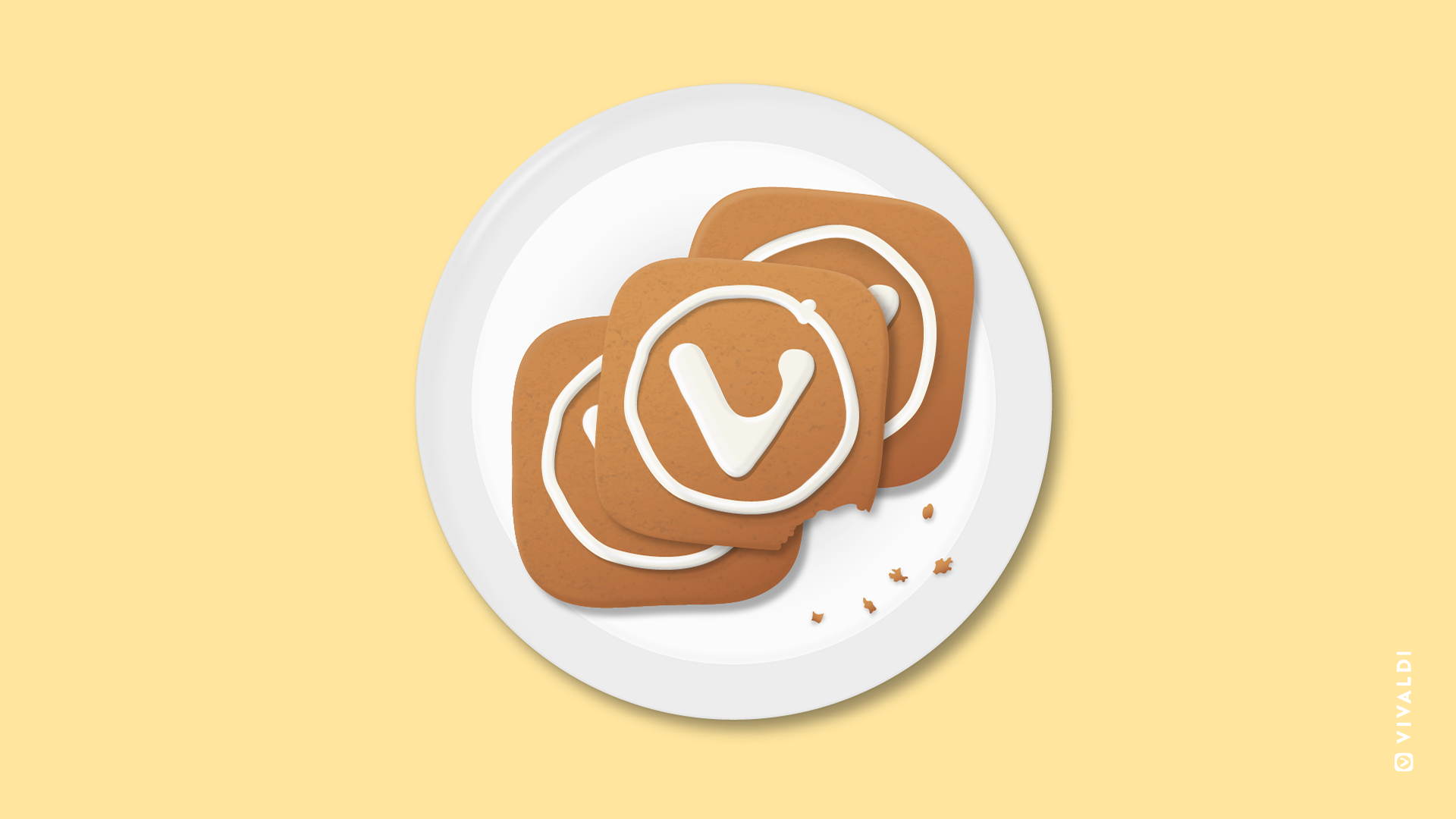
Fed up with incessant cookie dialogs and banners, many users wish to browse smoothly without any disruptions.
Even though the regulation (the EU’s GDPR) to protect users from tracking websites has good intent, many websites bother users to manage their cookie preferences before allowing the content they come to see. This results in a frustrating browsing experience. Users click “allow” or “accept” without realizing that they have unknowingly given permission for trackers to create behavioral profiles about them.
The solution to this problem is the Cookie Crumbler. Similar to Vivaldi on desktop, this feature is built into Vivaldi’s Ad and Tracker Blocker that will help users block the majority of these cookie dialogs and banners.
Simply go to Vivaldi Settings — Privacy — Enable Tracker and Ad blocking — Manage Sources — Ad blocking sources and enable the “Remove cookie warnings” lists.
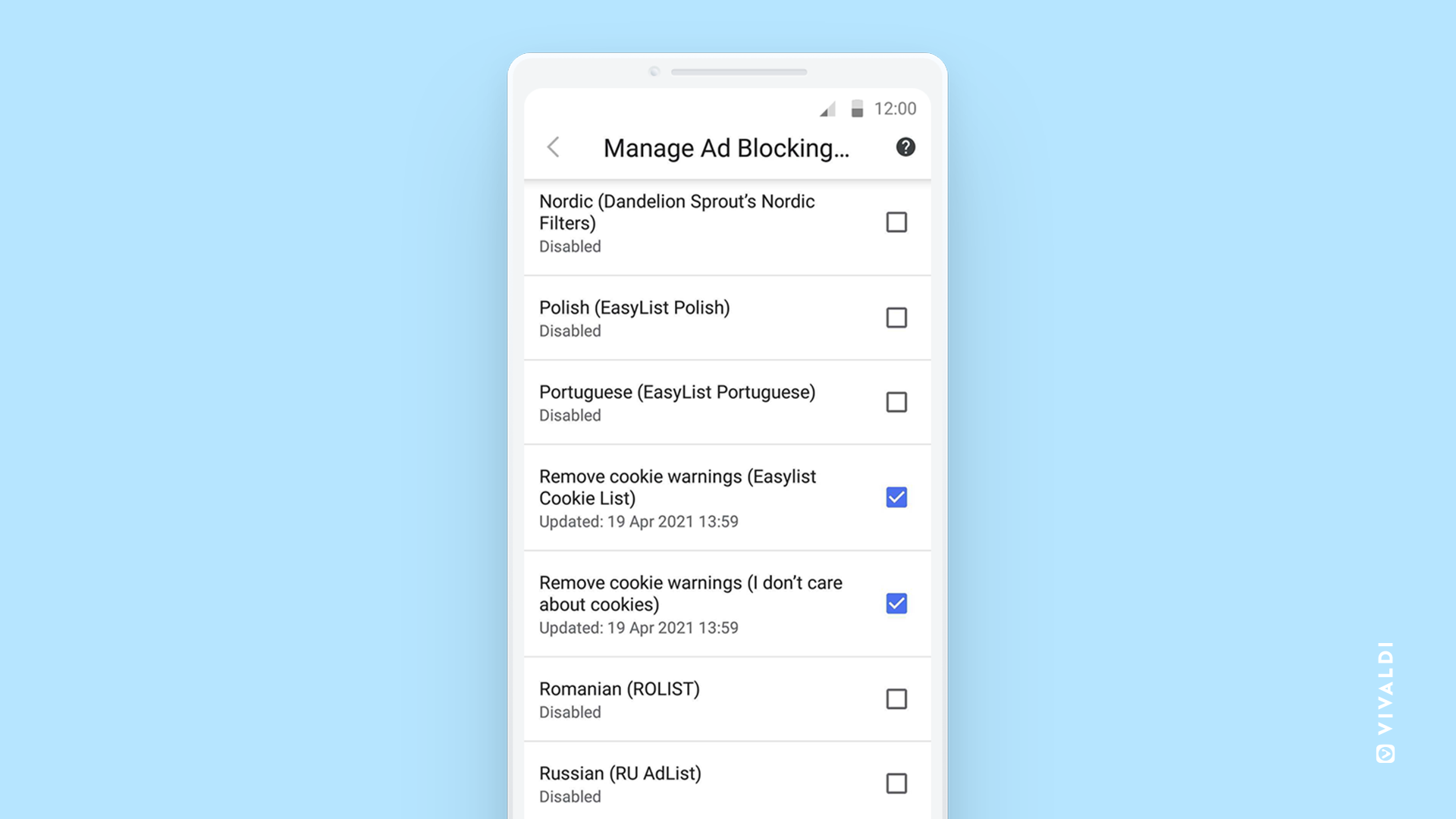
This will block the service that asks for consent, or hide the consent dialog, in the same way as it might remove a tracker or an ad.
This feature is based on the regularly updated third-party block lists — EasyList Cookie List and “I Don’t Care About Cookies”
. While Cookie Crumbler works on most of the websites, this is not a perfect solution, as there will be a few websites that use other tactics to obtain cookie consent.
Some sites may not let users in at all and may not work as expected as they actually require cookie consent for some functionality but users can disable Vivaldi Ad Blocker on those sites to disable the Cookie Crumbler. Please note that blocking cookie consent dialogs may not have the same result as rejecting all cookies on some websites.
It’s back as an option! A super-simple way to access the Start Page
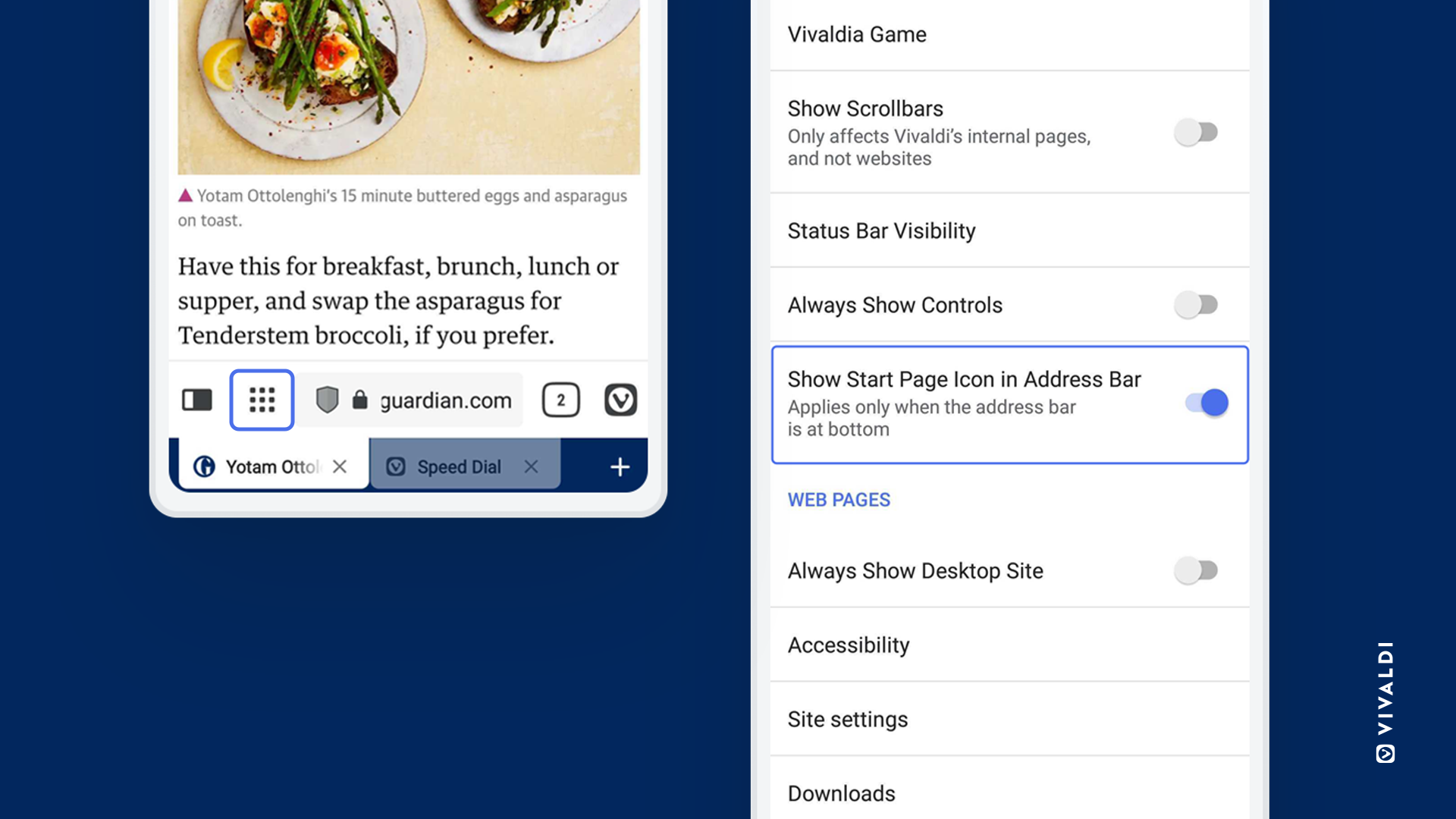
The browser should get things done quickly and easily with a user interface that works for its users.
That is why, a while back, Vivaldi implemented a very popular feature request, allowing users to move the Address Bar to the bottom of the screen for easy reach. Unfortunately, this meant that the Start Page button no longer fit on the bottom toolbar.
Many users still wish to see the Start Page button there, so now they can have it as an option. Toggle it and off from Vivaldi menu > Settings > Appearance.

